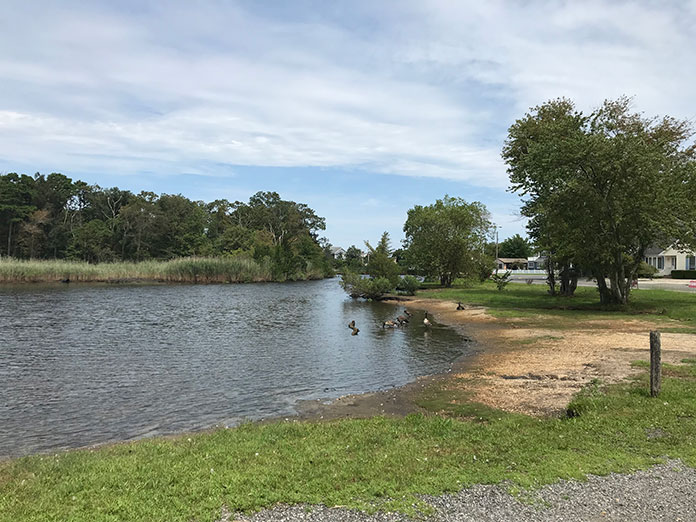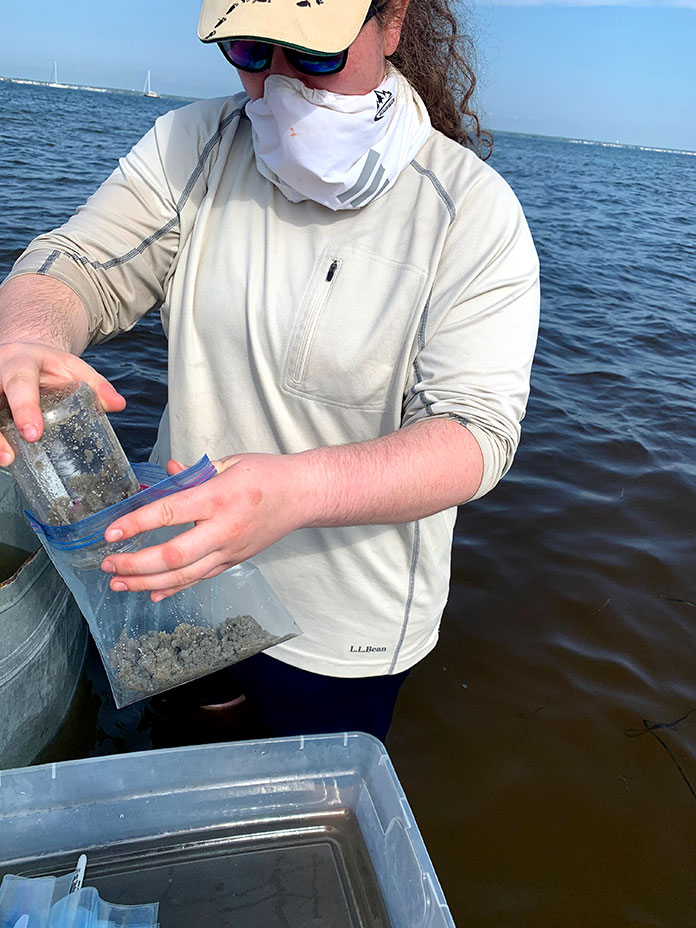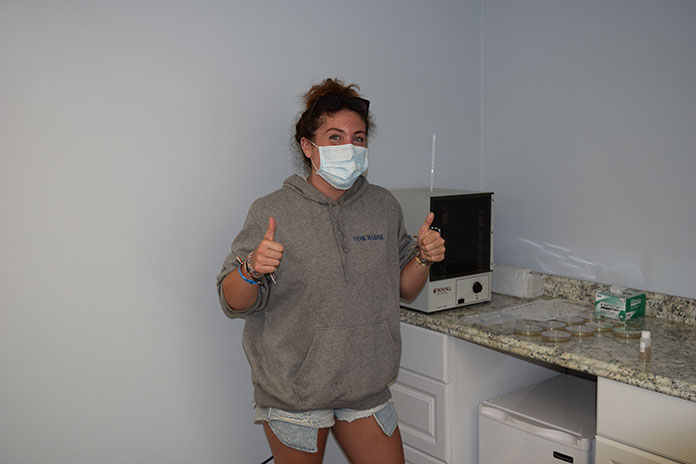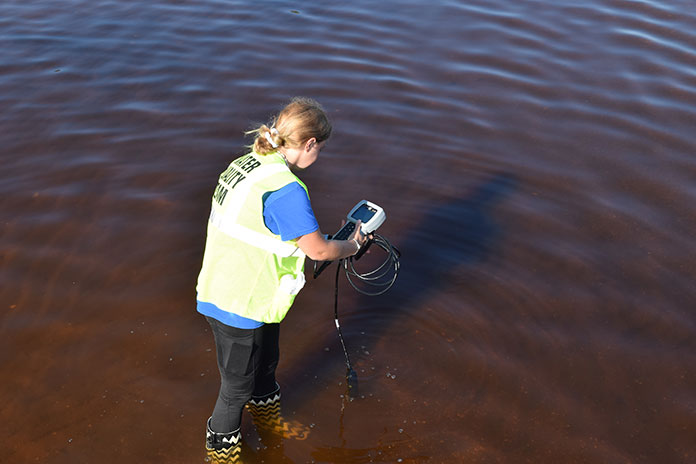
OCEAN COUNTY – Each year the local environmental group Save Barnegat Bay, which was founded to restore and protect Barnegat Bay and its ecosystem, awards grants that provide a hands-on learning opportunity for undergraduate students who are chosen to conduct field research.
These $1,000 grants are awarded to each accepted team project student and $1,500 to each accepted independent project student.
This year eight students formed two teams. Last week, in part 1, Jersey Shore Online reported on the Sedge Island Marine Conservation Zone behind Island Beach State Park to look at the biodiversity there. This week, in Part 2, we report on the team who studied the water quality in the Toms River, touching on all six river towns.
The members of the Student Grant Program Water Quality Team are: Rachel Dash, Kean University; Megan DeMatteo, Stockton University; Lauren Halloran, Berry College, GA; Emily Jaenicke, Villanova University; and Maggie Murphy, Stockton University. The team’s mentor was Supervisor of Science and Research at MATES Dr. John Wnek.

The purpose of the study was to gain a baseline of information about water quality conditions and pathogens along the river. The team wanted to determine areas that may be sources of pathogenic bacteria that have a negative impact on the river and consequently on Barnegat Bay.
Water testing started in 2010 when the research teams had been trying to identify where some of the sources might be coming from. The student team performed tests for eight weeks in June and July.
They sampled 12 sites on the north and south shores of the river, including sites in Pine Beach, Beachwood, Ocean Gate, Toms River, Island Heights and South Toms River.
Jeffrey’s Creek in Ocean Gate is a dense residential area that flows into the mouth of the Toms River, and is a prominent site for wildlife, especially for Canada geese and mallard ducks.
In Pine Beach, water samples were taken from Station Road and Avon Road swimming beaches. Both have a history of poor water quality. In 2014 the latter was ranked among the worst beaches in New Jersey for water quality based on Environmental Protection Agency data.
Beachwood Beach has a history of closures due to elevated bacteria levels and has been designated as the worst beach for swimming in various articles due to its history of poor water quality. The team also tested waters surrounding Beachwood Yacht Club, which is not tested by NJ Department of Environmental Protection even though there is a sailing club and community center there.
Areas that were tested in South Toms River included Cedar Point and Mathis Park. The surrounding areas of these sites are highly commercialized and are near past sewage and gasification plants that may have had lasting effects on the water quality.
The team tested the water at the Save Barnegat Bay waterfront near Haines Road and Money Island in Toms River. Both areas are densely populated and have a history of multiple past occasions of chemical contamination.
Three locations in Island Heights include two sites at Dillon’s Creek and the Summit Avenue Beach. Dillon’s Creek is an environmentally sensitive area due to the fact that it is next to a wildlife preserve.
The students tested several parameters at each location, including salinity, water temperature, conductivity, pH, suspended solids, turbidity, chlorophyll, and bacteria (fecal coliforms in colonies per 100 mL).

After multiple tests at each site, Jeffrey’s Creek and Beachwood Beach consistently tested high for e-coli pollution, and Dillon’s Creek tested above average.
The water quality tested on the northern shores of the river was largely dependent of the prevalent south to north wind, and tidal conditions may have an impact on water quality parameters, such as the ability to flush bacterial concentrations, which could play a role in some of the high values in some of the tested areas.
After the zoom presentation the students answered questions that were listed on a chat box.
The team was asked about the sites they chose for testing.
“The sites are potentially different,” said a male viewer. “One is in a narrow creek, which would be geomorphically very different from the sites in the Toms River estuary, which is a wide tidal estuary,” he said.
He said that testing results from Dillon’s Creek showed higher turbidity and higher suspended solids, and asked if those conditions could have played a role in some of the findings.

One of the students said whenever there is a high presence of waterfowl, there is an increase in suspended solids. Also, just walking through the water to take samples could increase turbidity, said Rachel Dash.
One member of the public asked the students if the study held any surprises, pleasant or otherwise, in comparing the data from prior years.
Dash said that in the past some of the pollution could be blamed on rainfall from the backflow of storm drain and sewer systems.
“We didn’t really have that much rainfall…and we still surpassed those levels more often than I would have thought,” she said. “We had two or three days we could blame it on storms, but otherwise…it just is.”
The safe swimming threshold for E.coli threshold is 200 colonies per 100 mL of water. Student Maggie Murphy said there was one day in particular where all sites were below the 200 level except Beachwood, which measured in the thousands when there had been no rainfall.
“There really is something different [in Beachwood] than it just being the runoff,” she said.
Executive Director of Save Barnegat Bay Britta Wenzel said the organization and Clean Ocean Action had received a grant from the Department of Environment Protection to work with all six river towns
“Rally for Barnegat Bay” would include specially trained dogs who could sniff out sanitary leaks underneath the land and infrastructure problems. The student’s water quality study would provide a baseline for the project as it moves forward, Wenzel said.






